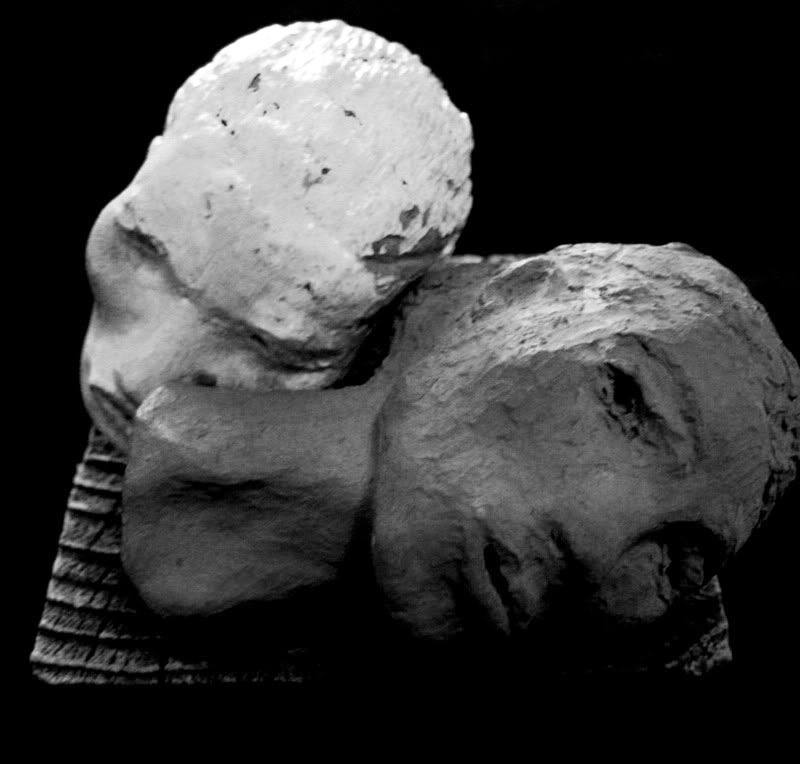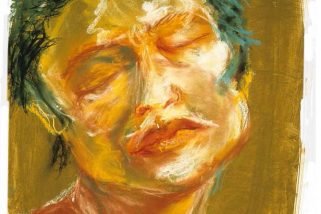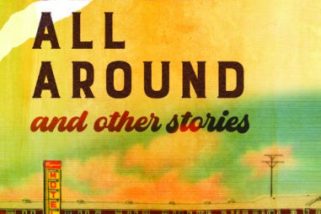How easy it is for us to find beauty in our creative sisters. In contrast, what images of our own creative selves do we tolerate or, worse, defend? Made from photos of her that she had previously rejected, “Self Portrait” taught Amber J. Deltorchio that “no matter what state I’m in I can be beautiful.” How can our artistic approach flip our perspective? Imagine what can be learned from our creative sisters.
We crown our 20th year with the gift of our creative intentions – offerings of written and visual self-portraits that honor our creative selves and make room for our creative sisters.


“Self Portrait” art by Amber Deltorchio
An artist and art educator, her art was created as an emotional healing tool that provided structure and love. “Self Portrait” – made from photos of her that she had critically rejected – showed Amber that “no matter what state I’m in I can be beautiful.”
_______________________________________________________
“Why Write?” by Penelope Dane
Because you were told hush. Because you used to sit in church, terrified you would stand, shouting that you hated God, Jesus, yourself, your family, this town. None of those things were true. Maybe it was the anti-depressants, filling your head with unspeakables. But in college, the Psychology of Addiction professor taught that drugs do not contain highs, they release them. If this is true, the unspeakables were always there, set loose in your synapses by a psychiatrist’s prescription pad.
Because when you were four, you sat, constipated, swinging your legs in the mint tiled bathroom, singing heroic epic poems about yourself. You never wrote down the poems because it took until you were six to learn to write the alphabet.
Because novels do not emerge, slime covered, fully formed like babies. You are no Doctorow. For you, writing a novel is not like driving at night, seeing only as far as the headlights but making the whole trip from notes to finished book in the dark. Following this metaphor, you spend two years, rising in the cold upstate New York mornings to write. After sunrise, you drive past dingy houses and wide snow covered fields to your tutoring job. You spit out 400 pages, not looking back, only ahead at the bit of illuminated road.
When you read the pages, there is no novel. There are ten scenes, written over and over, blurred mimeographs of themselves. You print this out, snap it into a 3-ring binder, which you hide in the closet. You buy German and Japanese pencils. A lined notebook. A cast iron teapot. In the early summer light, you write only in pencil. A story emerges about a ceramic artist who is shattered by the truth. Her psychological scars cut her off from life. The artist’s imperfections make her afraid no one will ever love her, and as a result of this fear, she makes bad choices. While you adjunct and shelve library books, the fictional ceramic artist builds bas-relief sculptures, transforming her past into a myth grand enough to plaster on temple walls.
You are still not finished with this novel. It is very imperfect.
Because you are in two car accidents in California. Head injuries from both. There are months you cannot look at a screen or read without vomiting. An 18 month headache. You lose 15 pounds.
Because it made you vomit to look at words, you wrote on paper without looking down, because in the dizzy buzz of the concussion months, the words were still there.
Because this is what you were born with, solid as your hazel eyes, fibrous breasts, birthmark on your left knee.
Because in fifth grade you startled your parents when you stopped reading the Sweet Valley Twins to read about leukemia, brain tumors, anemia, hemoglobin. You thought you owed it to your family to wear a white coat with Dr. Penelope G. Dane stitched above the pocket. When you were eighteen, you discover that your grandmother secretly wrote poetry. In the basement, in a cardboard box of your father’s childhood things, you found a leather 3-ring binder with a novella, painstakingly typed, about a family of cats.
You may have been a tight lipped little girl who sat at family dinners listening to men and her elders. The words you stifled need to come out sometime and who cares that you are 44 and have a bosom now.
Because no matter how many times she says it, you remain convinced that your mother does not really love you, but only the idea of you. Whether this is true does not matter, because you have believed it for so long. The impact of this on your life is something you cannot handle. But the myth making ceramic artist of your still unfinished novel can tackle rage, forgiveness, and love. She knows how to live those big emotions. She can do it for you. She does not get stuck for years in regret. Like the cartoon Tasmanian Devil, she whirl-blasts through any cage.
In her callused hands, everything is clay.
You write.
I think May Sarton said, “inhale life, exhale poetry.” That is what I try to do, whether I’m writing poetry or prose. I am a poet, writer, painter, dancer. I am inhaling life, exhaling creations.
_______________________________________________________

“Sisters” art by Marianne Murdock, from Waves: A Confluence of Women’s Voices
Marianne has penned a column of advice for pet owners in a city newspaper and has had a number of songs published. She is also the author of a book entitled RANCH DOG, A Tribute to the Working Dog in the American West in which she took on the role of Cowboy Poet. Willow Creek Press. 2000. She is currently dealing with PTSD and is revisiting her poetry and art from several years ago. This photograph of two women that she sculpted has not been shared publicly but she feels it is time to let it fly.
Inside the Bowl (Asaayi Lake) by Leeanna Torres
Today I will not be going to Asaayi Lake. Kitcheyan is going to Asaayi Lake, and I am not going with him. I miss seeing the shades of water during different hours of the day, the sun moving in its journey across the sky. I will not be going to Asaayi Lake, but I imagine what it will be like there – soft reds along the bluffs and a light wind.
Asaayi’s name comes from a Dinè (Navajo) word for “inside the bowl.”
I will not be going to Asaayi Lake. Kitcheyan is taking someone else to work with him, and it is no longer I that accompanies him on trips to conduct surveys on tribal lakes. I sit for a while in my own discontent, imagining the warblers and bluebirds filling the space between the chaparral brush and piñon-juniper. There are places I want to remember, places I want to return to.
Beauty is a noun on the shores of Asaayi Lake, the water touching the land in a way that is both ordinary and sacred. For the Navajo (Diné) people there is a concept of hózhó. Hozho is said to be the most important word in the Navajo language and is loosely translated as peace, balance, beauty and harmony. I see the word written in red, a beautiful but unwanted graffiti near the tracks between Downtown and Montano Street in Albuquerque. Hozho, Beautyway. What is its significance? What does it mean in this moment in time? I see two men driving bulldozers. The afternoon wind is picking up. I am afraid that I will drink again. After the baby is born. I am quiet about this. I am silent.
If I could return to Asaayi Lake, would the beauty there save me, save me from myself? No. But I return to this kind of wishful thinking, convincing myself that beauty and or place can save me, will save me. But the truth of myself follows me wherever I go, and it would follow me there to Asaayi Lake, beauty and all. I can find comfort and beauty, but until hozho reaches me at my core, I remain a drifting seeker, always grasping for the next beauty in both ordinary and extraordinary places. These are the places I hide, the open spaces of the west like Asaayi Lake, inviting us to “enjoy”, but holding our truths like the wanderers we are. Inside the bowl is where I’d like to hide, safe and silent on the shores of Asaayi.
Today I will not be going to Asaayi Lake, and I simmer in the wake of my own discontent. Such an ugly place to be, caught up in a soup of self-pity. So I buy a Snickers bar and think of the color of water instead, sometimes blue, other times clear, but always inviting, always wanting. Beautyway.
Leeanna Torres is a native daughter of the Land of Enchantment, with deep Indo-Hispana roots in New Mexico. She has spent the last ten years as an environmental professional working in and throughout the West.Through her writing she hopes to speak with and from that sacred sense of place that is inherent in the great Southwest, that intrinsic relationship between people and place – el sagrado, the sacred.






